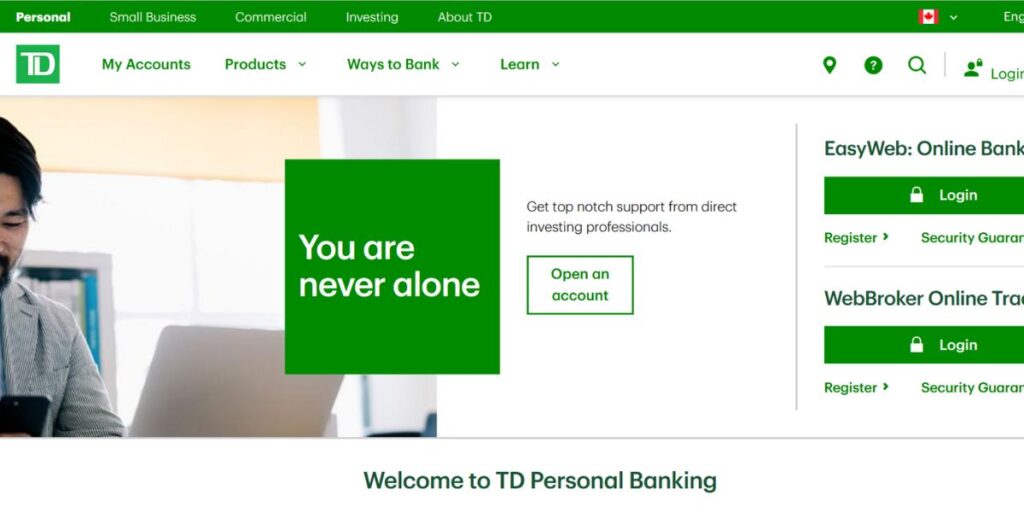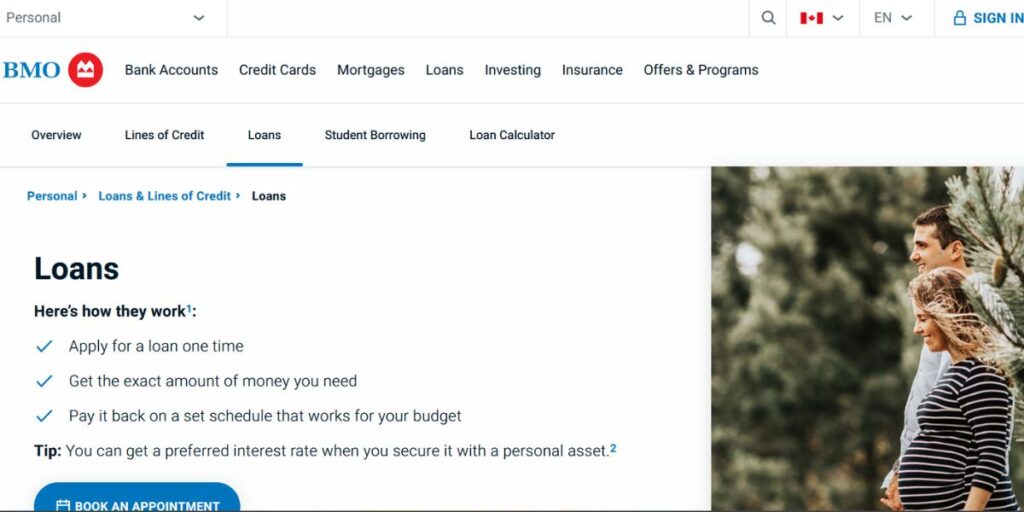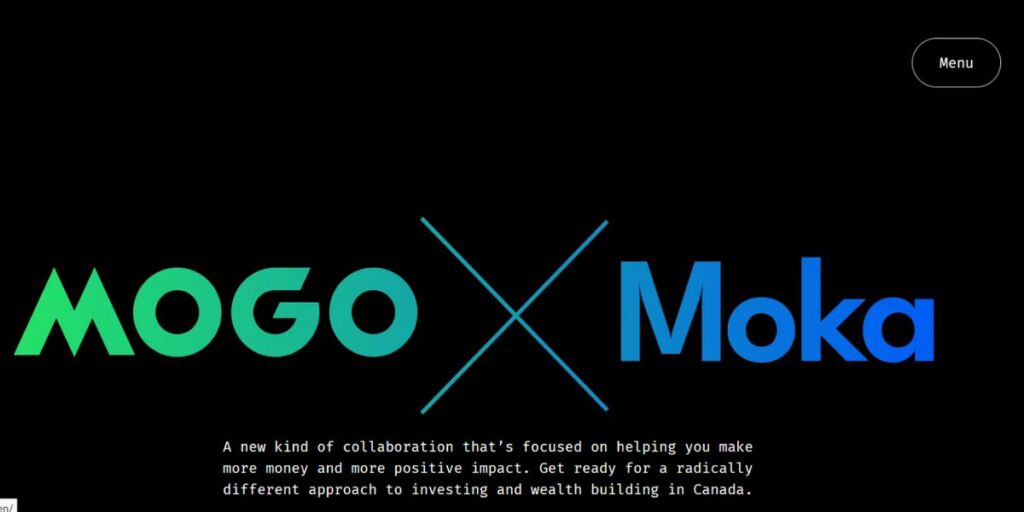As of recent data, a significant portion of the Canadian population seeks loans for various purposes.
According to statistics, a substantial percentage of Canadians apply for loans each year, ranging from personal loans to mortgages, business loans, and auto financing.
Personal loans are commonly sought for purposes such as debt consolidation, home renovations, medical expenses, education expenses, and unexpected emergencies.
Mortgages remain a prevalent form of borrowing, with many Canadians aspiring to homeownership or seeking to refinance existing mortgages to take advantage of lower interest rates or tap into home equity.
Small business owners often require financing to start or expand their ventures, contributing to the demand for business loans.
Automobile financing is another significant area of borrowing, as many Canadians rely on loans to purchase cars, trucks, or other vehicles.
How to Apply Loan in Canada?
In Canada, you can apply for loans through various financial institutions, including:
- Banks: Major banks like Royal Bank of Canada (RBC), Toronto-Dominion Bank (TD), Bank of Montreal (BMO), and Scotiabank offer a wide range of loan products, including personal loans, mortgages, and business loans.
- Credit Unions: Credit unions in Canada, such as Vancity and Desjardins, provide members with access to loans and other financial services, often with competitive rates and personalized service.
- Online Lenders: Online lending platforms offer quick and convenient loan application processes. Examples include Borrowell, Mogo, and Loans Canada.
- Peer-to-Peer (P2P) Lending Platforms: P2P lending platforms connect borrowers with individual investors willing to fund loans. Examples include Lending Loop and FundThrough.
- Mortgage Brokers: Mortgage brokers help borrowers find mortgage loans from various lenders, including banks, credit unions, and alternative lenders, by acting as intermediaries between borrowers and lenders.
- Automobile Dealerships: If you’re looking to finance a vehicle purchase, many automobile dealerships offer financing options through partnerships with banks and other financial institutions.
- Specialist Lenders: Specialist lenders cater to specific needs, such as bad credit loans or loans for newcomers to Canada. Examples include Fairstone Financial and Easy Financial.
- Government Programs: The Canadian government offers various loan programs to support small businesses, students, and homeowners. Examples include the Canada Small Business Financing Program, Canada Student Loans Program, and Canada Mortgage and Housing Corporation (CMHC) programs.
- Home Equity Loan Providers: Homeowners can access equity in their homes through home equity loans or lines of credit offered by banks, credit unions, and mortgage lenders.
- Credit Card Companies: Some credit card issuers in Canada offer personal loans to their cardholders, such as TD Canada Trust and CIBC.
When applying for a loan in Canada, it’s essential to compare interest rates, terms, and fees from different lenders to ensure you’re getting the best deal for your financial circumstances.
Toronto-Dominion Bank (TD)

The Toronto-Dominion Bank (TD) is one of Canada’s largest and most prominent financial institutions, with a rich history dating back to the 19th century.
TD roots can be traced back to 1855 when the Bank of Toronto was founded in Toronto, Ontario.
In 1919, the Dominion Bank, another major Canadian bank, merged with the Bank of Toronto to form the Toronto-Dominion Bank.
Throughout its history, TD has played a significant role in the development of Canada’s financial sector and economy.
The bank has expanded its operations both domestically and internationally, establishing a strong presence in the United States through acquisitions and strategic partnerships.
TD offers a wide range of financial products and services to its customers, including personal and commercial banking, wealth management, insurance, and capital markets services.
One of the key offerings of TD is its lending services, which encompass various types of loans such as personal loans, home mortgages, business loans, and lines of credit.
Bank of Montreal (BMO)

The Bank of Montreal (BMO) is one of Canada’s oldest and largest financial institutions, with a rich history dating back to 1817.
Founded in Montreal, Quebec, BMO played a pivotal role in the development of Canada’s banking sector and economy.
BMO’s origins can be traced back to the founding of the Montreal Bank by John Richardson and eight other businessmen.
The bank initially focused on providing banking services to merchants and traders in Montreal, facilitating trade and commerce in the region.
In 1822, the Montreal Bank became the first Canadian bank to issue banknotes, further solidifying its position as a leading financial institution in the country.
Over the years, the bank expanded its operations, opening branches across Canada and establishing a presence in key international markets.
Throughout its history, BMO has been at the forefront of innovation in the banking industry. The bank introduced several innovations, including Canada’s first savings bank, the first automated banking machine (ABM), and the first online banking platform.
BMO offers a comprehensive range of financial products and services to its customers, including personal and commercial banking, wealth management, investment banking, and capital markets services.
One of the key offerings of BMO is its lending services, which encompass various types of loans such as personal loans, mortgages, business loans, and lines of credit.
Scotiabank

Scotiabank, officially known as The Bank of Nova Scotia, is one of Canada’s largest and oldest banks, with a storied history dating back to 1832.
Founded in Halifax, Nova Scotia, by a group of businessmen led by William Lawson, Scotiabank has played a pivotal role in the development of Canada’s financial sector and economy.
In its early years, Scotiabank focused on providing banking services to merchants, traders, and shipowners involved in the lucrative maritime trade in Atlantic Canada.
The bank strategic location in Halifax, a major seaport at the time, facilitated its growth and expansion.
As Canada’s economy expanded westward, Scotiabank established branches across the country, supporting the development of new industries, including agriculture, mining, and manufacturing.
The bank played a crucial role in financing major infrastructure projects such as railways, bridges, and ports, contributing to Canada’s nation-building efforts.
Scotiabank has also expanded its operations internationally, establishing a presence in key markets across the Americas, Europe, and Asia.
The bank global footprint and diverse portfolio of businesses, including personal and commercial banking, wealth management, and investment banking, have positioned it as a leading financial institution on the world stage.
One of the key offerings of Scotiabank is its lending services, which encompass various types of loans such as personal loans, mortgages, business loans, and lines of credit.
Vancity

Vancity, formally known as Vancouver City Savings Credit Union, is a member-owned financial institution based in Vancouver, British Columbia, Canada.
Founded in 1946, Vancity has a rich history rooted in community service, social responsibility, and environmental sustainability.
Originally established to provide financial services to the residents of Vancouver, Vancity has since grown to become Canada largest community credit union, serving over half a million members across British Columbia.
The credit union operates on cooperative principles, with a focus on putting the needs of its members and the community first.
Throughout its history, Vancity has been a pioneer in socially responsible banking, advocating for environmental conservation, social equity, and economic justice.
The credit union has financed numerous community development projects, affordable housing initiatives, and sustainable businesses, demonstrating its commitment to making a positive impact on society.
Vancity offers a wide range of financial products and services to its members, including personal and commercial banking, wealth management, insurance, and investment solutions.
Desjardins

Desjardins Group, often simply referred to as Desjardins, is a cooperative financial group and the largest federation of credit unions in North America.
Founded in 1900 by Alphonse Desjardins in Levis, Quebec, Canada, Desjardins has a long and storied history deeply rooted in the cooperative movement and the principles of social responsibility, community service, and financial inclusion.
Alphonse Desjardins, a journalist and social entrepreneur, established the first caisse populaire (people’s bank) in Canada with the aim of providing affordable financial services to working-class individuals and families.
This groundbreaking initiative marked the beginning of the cooperative banking movement in Quebec and laid the foundation for what would later become Desjardins Group.
Over the years, Desjardins expanded its operations and diversified its range of financial products and services to meet the evolving needs of its members and communities.
The cooperative model enabled Desjardins to grow organically through the establishment of new caisses populaires and credit unions across Quebec and eventually throughout Canada.
Today, Desjardins Group serves over seven million members and clients across Canada and has a significant presence in the United States and other international markets.
Borrowell

Borrowell is a Canadian financial technology company that provides online lending and credit monitoring services.
Founded in 2014 by Andrew Graham and Eva Wong, Borrowell aims to make financial services more accessible, transparent, and affordable for Canadians.
The company began its journey by offering free credit scores and reports to consumers, empowering them to better understand and manage their credit health.
Borrowell then expanded its services to include personal loans, providing Canadians with access to fast and convenient borrowing options through its online platform.
Borrowell personal loans are designed to meet various financial needs, such as debt consolidation, home improvements, major purchases, and unexpected expenses.
The company offers competitive interest rates, flexible repayment terms, and a quick application process, making it easier for consumers to obtain the funds they need.
Mogo

Mogo Inc. is a Canadian financial technology company that offers a range of financial products and services, including personal loans, mortgages, credit monitoring, and wealth management tools.
Founded in 2003 by David Feller and Michael Wekerle, Mogo was established with the goal of providing Canadians with innovative and convenient financial solutions.
Initially, Mogo focused on offering online credit score monitoring services, allowing consumers to track their credit health and make informed financial decisions.
Over time, the company expanded its offerings to include personal loans, leveraging its technology platform to streamline the borrowing process and provide faster access to funds.
Mogo personal loans are designed to meet various financial needs, such as debt consolidation, home renovations, major purchases, and unexpected expenses.
The company offers competitive interest rates, flexible repayment terms, and a simple online application process.
Loans Canada

Loans Canada is a leading online financial platform that provides Canadians with access to a wide range of loan products and financial resources.
Founded in 2012 by Scott Satov and Caitlin Wood, Loans Canada was established with the mission of helping Canadians make informed financial decisions and obtain affordable financing options.
The company began its journey by offering an online loan comparison platform, allowing consumers to compare rates and terms from multiple lenders in one place.
This streamlined the borrowing process and provided consumers with greater transparency and choice when seeking financing.
Over time, Loans Canada expanded its offerings to include a diverse range of loan products, including personal loans, debt consolidation loans, car loans, home equity loans, and small business loans.
The platform partners with a network of reputable lenders across Canada to provide borrowers with access to competitive rates and flexible repayment options.
Lending Loop

Lending Loop is a Canadian peer-to-peer lending platform that connects small and medium-sized businesses (SMBs) with investors looking to lend money for a return.
Founded in 2014 by Cato Pastoll and Brandon Vlaar, Lending Loop was created with the aim of providing a more accessible and efficient alternative to traditional bank loans for Canadian businesses.
The platform operates on the peer-to-peer lending model, where investors lend money directly to businesses through the Lending Loop platform.
This allows businesses to access financing quickly and conveniently, while investors have the opportunity to earn attractive returns on their investments.
Lending Loop offers various types of loans to businesses, including term loans, lines of credit, and invoice financing.
Businesses can use the funds for a variety of purposes, such as working capital, expansion, inventory purchases, equipment financing, and debt consolidation.
FundThrough

FundThrough is a Canadian fintech company that provides invoice financing solutions to small and medium-sized businesses (SMBs).
Founded in 2014 by Steven Uster and Graham McBride, FundThrough was created with the mission of helping businesses improve their cash flow by providing access to working capital through invoice financing.
Invoice financing, also known as accounts receivable financing, allows businesses to unlock the value of their unpaid invoices by receiving an advance on the amount owed.
FundThrough platform enables businesses to upload their outstanding invoices and receive funding within as little as 24 hours, helping them bridge the gap between invoicing and receiving payment.
The lending process on FundThrough is quick and straightforward. Once a business uploads its invoices to the platform, FundThrough conducts a quick review and assessment of the invoices’ creditworthiness.
Once approved, the business can receive funding equivalent to a percentage of the invoice value, typically between 80% to 90%. The remaining percentage, minus a fee, is paid to the business once the invoice is paid by the customer.
FundThrough offers businesses flexibility and convenience in managing their cash flow, allowing them to access funding as needed without the need for lengthy approval processes or collateral.
This can be particularly beneficial for businesses with irregular cash flow or seasonal fluctuations in revenue.
Fairstone Financial

Fairstone Financial is a leading Canadian financial services provider specializing in lending solutions for individuals and families.
Originally established in 1923 as CitiFinancial Canada, the company underwent a series of transformations before becoming Fairstone Financial in 2017.
Fairstone Financial offers a wide range of loan products, including personal loans, debt consolidation loans, home equity loans, and secured loans.
Easy Financial

Easy Financial, a division of goeasy Ltd., is a Canadian financial services company specializing in providing accessible and convenient lending solutions to individuals who may have difficulty obtaining traditional bank loans.
Established in 2006, Easy Financial was founded with the aim of offering financial products and services tailored to the needs of Canadians who may have less-than-perfect credit histories or limited access to traditional banking services.
Easy Financial offers a range of loan products, including personal loans, secured loans, and home equity loans, designed to meet the diverse financial needs of its customers.
Canada Small Business Financing Program
The Canada Small Business Financing Program (CSBFP) is a government initiative aimed at supporting small businesses by providing access to affordable financing.
Established in 1961, the CSBFP is administered by Innovation, Science and Economic Development Canada (ISED) and delivered through participating financial institutions across the country.
The CSBFP aims to help small businesses start, grow, and expand by providing access to financing for eligible assets, such as equipment, machinery, commercial real estate, and leasehold improvements.
The program enables small businesses to access loans of up to $1 million to finance up to 90% of the cost of eligible assets, with flexible repayment terms of up to 10 years.
Canada Student Loans Program
The Canada Student Loans Program (CSLP) is a federal government initiative that helps Canadian students finance their post-secondary education through loans and grants.
Established in 1964, the CSLP is administered by Employment and Social Development Canada (ESDC) in partnership with participating provincial and territorial governments.
The CSLP aims to ensure that all Canadians have access to affordable post-secondary education by providing financial assistance to students who may not otherwise be able to afford the costs of tuition, books, and living expenses.
The program offers both loans, which students are required to repay, and grants, which do not need to be repaid.
Initially, the CSLP provided loans directly to students through the federal government.
However, in the 1990s, the program transitioned to a system where loans are administered and disbursed by financial institutions, such as banks and credit unions, in partnership with the federal government.
Under the CSLP, eligible students can apply for both federal and provincial/territorial loans and grants through a single application process.
The amount of financial assistance provided is based on factors such as the student’s financial need, family income, and the cost of education.
Loans are typically interest-free while students are enrolled in full-time studies, and repayment begins six months after graduation or when the student leaves school.
Canada Mortgage
The history of mortgages in Canada is deeply intertwined with the development of the country’s housing market and financial system.
Mortgages have long been a primary means for Canadians to finance the purchase of homes, allowing individuals and families to become homeowners without having to pay the full purchase price upfront.
The concept of mortgages in Canada dates back to the early colonial period, with some of the earliest recorded mortgage transactions occurring in the late 18th century.
It wasn’t until the late 19th and early 20th centuries that mortgages became more widely available and accessible to Canadians.
Housing Corporation (CMHC) programs
The Canada Mortgage and Housing Corporation (CMHC) is a federal government agency that plays a vital role in Canada’s housing market by providing mortgage insurance, housing research, and affordable housing initiatives.
Established in 1946 as part of the National Housing Act, the CMHC has a rich history of supporting housing affordability, accessibility, and sustainability across the country.
One of the key programs offered by CMHC is mortgage loan insurance, which helps Canadians purchase homes with a down payment of as little as 5% by protecting lenders against mortgage default.
This program has played a crucial role in expanding access to homeownership for Canadians, particularly first-time buyers and those with lower incomes or less established credit histories.
Application Process in the Canada for Loan
- Research: Look into different lenders and what kinds of loans they offer. Compare things like interest rates and fees to find the best one for you.
- Prepare: Get all your documents ready, like ID, proof of income, and bank statements.
- Apply: You can do this online or go to a bank in person. Fill out the application form with your information.
- Credit Check: The lender will check your credit history to see if you’re good at paying back money.
- Approval: If everything looks good, they might approve your application.
- Offer: They’ll give you an offer with details like how much you can borrow, the interest rate, and how long you have to pay it back.
If you like the offer, sign it to accept the loan. After you sign, they’ll put the money in your bank account. Stick to the payment plan they give you so you don’t get any extra charges.
If you’re not sure about anything, ask the lender’s customer service team for help.

Hey, I’m Ratiranjan Singha, the Creator of Myworldstuffs.com. I Offer in-Depth Articles and Guides that Help you to Understand Various Financial Concepts.








